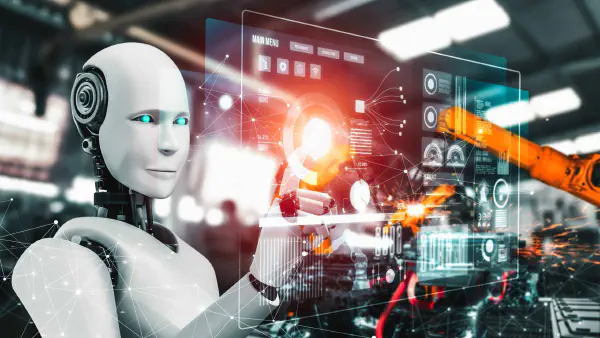
In the world of manufacturing, ensuring the highest level of quality in every product that rolls off the assembly line is a fundamental goal. Quality control and inspection play a pivotal role in achieving this objective. Over the years, technology has transformed the way manufacturers approach quality control, and one of the most revolutionary advancements is the integration of robots equipped with image processing capabilities.
In this blog, we will explore the dynamic synergy between quality control, image processing, and robotics, and how it is revolutionizing the manufacturing industry. We’ll delve into the use of OpenCV, a powerful computer vision library, and its applications in quality control and inspection. But first, let’s understand why quality control and inspection are so crucial in the manufacturing process.
The Importance of Quality Control and Inspection
Quality control is the systematic process of ensuring that products meet certain predefined standards and specifications. Inspection is a critical aspect of quality control, as it involves examining products to identify defects, inconsistencies, or deviations from the required quality standards. Both of these processes are essential in maintaining a high-quality production environment for several reasons:
- Customer Satisfaction
- High-quality products lead to customer satisfaction and loyalty, which are critical for a company’s success.
- Cost Reduction
- By identifying and addressing issues early in the production process, manufacturers can reduce waste, rework, and costly recalls.
- Compliance
- Meeting industry regulations and standards is essential for maintaining product safety and reputation.
- Competitive Advantage
- Companies that consistently deliver high-quality products can gain a significant edge over their competitors.
Image Processing and Robotics in Quality Control
The integration of robots equipped with image processing capabilities has been a game-changer in the world of quality control and inspection. These robots can perform a wide range of tasks, including:
- Visual Inspection
- Robots capture images of products and use image processing techniques to compare these images with predefined standards. This enables them to identify defects, variations, and inconsistencies that may be imperceptible to the human eye.
- Precision and Speed
- Robots equipped with image processing systems are incredibly precise and consistent in their inspections, ensuring that no detail is overlooked. They can also perform these inspections at high speeds, increasing production efficiency.
- 24/7 Operation
- Robots do not need breaks, and they can operate around the clock, providing continuous quality control and inspection.
- Data Collection
- Image processing systems can record and analyze vast amounts of data, providing manufacturers with insights that can lead to process improvements and enhanced product quality.
Using OpenCV in Quality Control
OpenCV (Open Source Computer Vision Library) is a widely used and open-source library for computer vision and image processing. It has found applications in various industries, including manufacturing. Here’s how OpenCV can enhance quality control and inspection:
- Image Preprocessing
- OpenCV can be used to preprocess images by removing noise, adjusting brightness and contrast, and enhancing image clarity. This ensures that the input images for inspection are of high quality.
- Feature Detection
- OpenCV provides tools for detecting specific features in images, which can be useful for identifying defects or irregularities in products.
- Machine Learning Integration
- OpenCV can be integrated with machine learning algorithms to train models that can identify defects and anomalies in real-time.
- Real-time Inspection
- OpenCV’s ability to process images in real-time is invaluable for manufacturing environments where rapid decision-making is essential.
Conclusion
Robots equipped with image processing technology, combined with the power of OpenCV, have ushered in a new era of quality control and inspection in manufacturing. This advanced approach not only ensures high-quality production but also brings efficiency, cost savings, and data-driven insights into the manufacturing process.
Manufacturers who embrace these technologies will find themselves at the forefront of the industry, setting new standards for product quality and customer satisfaction. As image processing and robotics continue to evolve, we can expect even more exciting developments in the field of quality control and inspection.